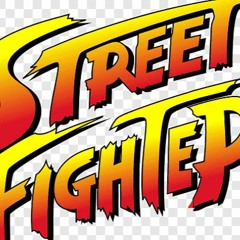


Using tile 0x96 with the logo palette allows the 68000 to have a (very expensive) system where 255 pixels are wasted to transparency but the 256th can be used like a pencil. But if we place them side by side, we notice that index 14 is dark green in Guile's palette but dark blue in the logo palette. Guile's green palette is not useful since the logo uses blue colors. The CPU is free to issue a tile drawing command using whatever palette it pleases. Something that I omitted to mention earlier is that the palette management is entirely under the 68000 control. If you look closely at tile 0x96 you will notice that it has only one pixel visible in the lower left corner. The last part of the puzzle comes from Guile's calves. The logo now read 'The World Warrlor'.Īt this point, what was needed was a way to slice the top of the 'l' to make it look like a dot on top of an 'i' but how could he do that since the 68000 cannot write in a tile? That was better but it only displaced the problem since the borrowed right leg of the 'W' looked like an 'l' instead of an 'i'. So, he dropped the three last tiles 0xDD, 0xDE, and 0xDF and replaced them with 0xCD and 0xCE. He noticed that there was an 'or' in 'World' which would kinda fit in place of the 'ier'. The way Akiman solved his problem show that you have to be practical in order to ship. The logo is drawn via 16 draw calls using tiles 0xC8, 0xC9, 0xCA, 0xCB, 0xCC, 0xCD, 0xCE, 0xCF, 0xD8, 0xD9, 0xDA, 0xDB, 0xDC, 0xDD, 0xDE, and 0xDF. How did he turn an 'e' into an 'o'? Since I had a sheet extractor, I looked for the text and sure enough, the logo and the typo were found on sheet 0x7B00. Phew!Īkiman description of the solution left me wanting more details. I tried layering various other sprites over it until finally, it looked like an ‘o’.

"Maybe I can just force it to look like an ‘o’," I thought. Since the logo had already been created, I couldn’t just go in and change the letter at this point. Now I can safely tell this story too, but we actually didn’t discover it until several months after all the sprite work had been done.

The problem Akiman describe is that the GFX ROM had been burned but he could still make changes to the instructions.īut how could he fix the mistake if the artwork was set in stone at this point? The GFX ROM and the 68000 instructions ROM as burned separately. They are taken from the GFX ROM as they are and sent to the screen (although they can be flipped horizontally or vertically). It can draw a lot of tiles but cannot alter them. The CPS-1 is a super tile drawing machine. To fully understand the issue, we need to dig into how the arcade hardware works. Akiman, Lead graphic design on SF2 (translated by Shmuplation) A recreation of the problem.


 0 kommentar(er)
0 kommentar(er)
